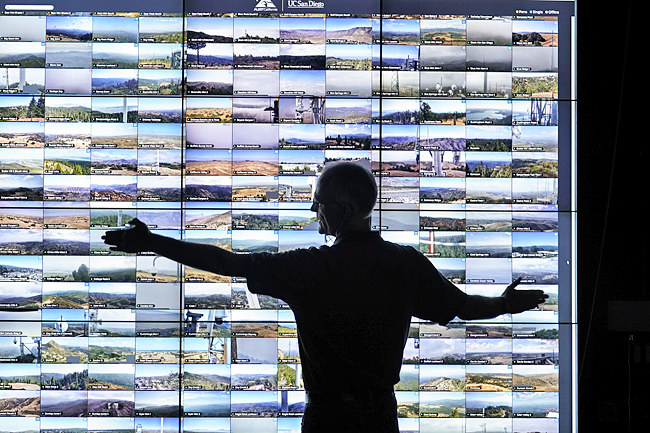AP – Wildfires fuelled by climate change have ravaged communities from Maui to the Mediterranean this summer, killing many people, exhausting firefighters and fuelling demand for new solutions. Enter artificial intelligence (AI).
Firefighters and startups are using AI-enabled cameras to scan the horizon for signs of smoke. A German company is building a constellation of satellites to detect fires from space. And Microsoft is using AI models to predict where the next blaze could be sparked.
With wildfires becoming larger and more intense as the world warms, firefighters, utilities and governments are scrambling to get ahead of the flames by tapping into the latest AI technology – which has stirred both fear and excitement for its potential to transform life.
While increasingly stretched first responders hope AI offers them a leg up, humans are still needed to check that the tech is accurate.
California’s main firefighting agency this summer started testing an AI system that looks for smoke from more than 1,000 mountaintop camera feeds and is now expanding it statewide.

The system is designed to find abnormalities and alert emergency command centres, where staffers will confirm whether it’s indeed smoke or something else in the air.
“The beauty of this is that it immediately pops up on the screen and those dispatchers or call takers are able to interrogate that screen” and determine whether to send a crew, said staff chief of intelligence Phillip SeLegue for the California Department of Forestry and Fire Protection. The cameras, part of a network that workers previously had to watch, provide billions of bytes of data for the AI system to digest.
While humans still need to confirm any smoke sightings, the system helps reduce fatigue among staffers typically monitoring multiple screens and cameras, alerting them to look only when there’s possible fire or smoke, SeLegue said.
It’s already helped. A battalion chief got a smoke alert in the middle of the night, confirmed it on his cellphone and called a command centre in San Diego to scramble first responders to the remote area.
The dispatchers said that if they hadn’t been alerted, the fire would have been much larger because it likely wouldn’t have been noticed until the next morning, SeLegue said.
San Francisco startup Pano AI takes a similar approach, mounting cameras on cell towers that scan for smoke and alert customers, including fire departments, utility companies and ski resorts.
The cameras use computer vision machine learning, a type of AI.
“They’re trained very specifically to detect smoke or not, and we train them with images of smoke and images of not smoke,” Chief Executive Officer Sonia Kastner said.
The images are combined with feeds from government weather satellites that scan for hotspots, along with other data sources, such as social media posts.
The technology gets around one of the main problems in the traditional way of detecting wildfires – relying on 911 calls from passers-by that need confirmation from staffers before crews and water-dropping planes can be deployed. – Kelvin Chan








